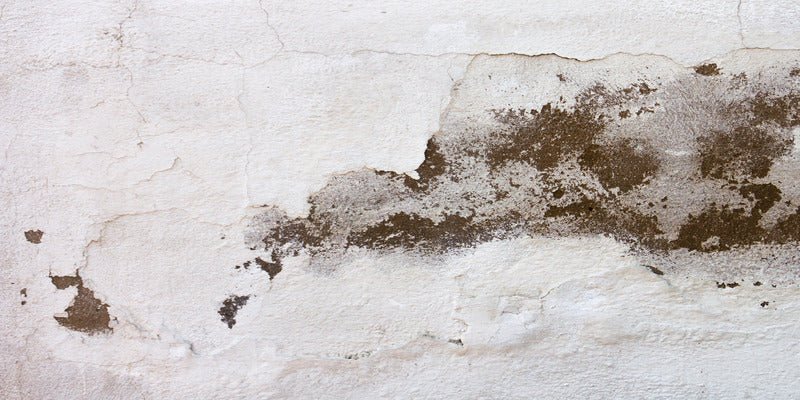How to Test Indoor Air Quality for Mold: A Comprehensive Guide
Key Takeaways
- Early Detection is Critical for Health Protection: Learning how to test for mold involves recognizing both visible signs (discolored patches, peeling paint) and subtle indicators (musty odors, unexplained health symptoms). Early identification prevents serious health complications and costly structural damage.
- Professional Testing Provides Comprehensive Assessment: While DIY methods exist, professional air quality test for mold services offer superior accuracy using advanced equipment, laboratory analysis, and certified expertise. They can detect hidden mold growth and provide detailed reports with specific remediation recommendations.
- Smart Monitoring Enables Proactive Prevention: Modern technology answers the question "do air quality monitors detect mold" by focusing on prevention rather than detection. Smart monitors like Sensibo track humidity levels and environmental conditions that promote mold growth, sending alerts before problems develop.
- Understanding Test Results Guides Appropriate Response: Interpreting mold spore counts and identifying mold types is essential for determining health risks. Toxic molds like Stachybotrys require immediate attention regardless of concentration, while other common molds may be manageable through environmental controls.
- Health Symptoms Should Prompt Immediate Testing: Unexplained respiratory issues, allergies, skin irritation, or neurological symptoms among occupants warrant immediate mold testing. Vulnerable populations including children, elderly individuals, and those with compromised immune systems face heightened risks from mold exposure.
In the sanctuary of our homes, where we seek refuge and solace, the quality of the air we breathe is often taken for granted. Yet, hidden within the very air we inhale may lie a silent and insidious threat—mold. This stealthy intruder, born of moisture and darkness, not only threatens the structural integrity of our living spaces but also poses significant health risks to those who dwell within.
Mold, in its many forms, can permeate our indoor environments without us ever realizing it. It lurks in corners, crevices, and unseen corners of our homes, releasing tiny spores into the air we breathe. And while these minuscule mold spores are invisible to the naked eye, the consequences of exposure can be devastating.
The health implications of mold exposure are far-reaching. Allergies, respiratory problems, skin irritation, and even more severe conditions can result from prolonged contact with mold-contaminated air. It's a threat that often goes undetected until symptoms manifest, and by then, the damage may already be done.
In this comprehensive guide, we'll walk you through the essential steps of testing indoor air quality for mold. From DIY testing methods to the cutting-edge technology offered by Sensibo, we'll explore various approaches to help you protect your indoor environment. Sensibo, a leader in smart indoor air quality monitoring, provides innovative solutions that not only detect mold but also empower you to maintain a healthy living space.
So, join us on this journey to unlock the secrets of indoor air quality and mold detection. Together, we'll learn how to ensure the air we breathe is pure and pristine, free from the invisible threats that may lurk within our homes. Your health and well-being deserve nothing less.
Mold and Its Health Implications
Mold, often underestimated and misunderstood, is a pervasive organism that can silently infiltrate our living spaces, impacting both our homes and health. In this section, we'll delve into what mold is, why it poses health risks, and the common health problems associated with mold exposure. We'll also emphasize the critical importance of early detection and prevention.
What is Considered as Mold?
Mold is a type of fungus that exists virtually everywhere on Earth. It thrives in damp, humid conditions, making indoor environments, particularly those with moisture issues, susceptible to mold growth. Mold reproduces by releasing tiny spores into the air, which can be inhaled, ingested, or come into contact with the skin.
Health Risks of Mold Exposure
While mold plays essential roles in nature, its presence indoors can have detrimental effects on human health. Here's why mold poses health risks:
- Respiratory Problems: Mold spores, when inhaled, can irritate the respiratory system, leading to symptoms such as coughing, wheezing, nasal congestion, and throat irritation. Individuals with asthma or allergies may experience exacerbated symptoms.
- Allergic Reactions: Mold is a common allergen. Prolonged exposure can trigger allergic reactions, including sneezing, runny nose, itchy eyes, and skin rashes, similar to seasonal allergies.
- Mycotoxins: Some molds produce mycotoxins, toxic substances that can have more severe health effects. Mycotoxin exposure has been linked to headaches, fatigue, nausea, and even neurological symptoms in extreme cases.
- Immune System Compromises: Prolonged mold exposure can weaken the immune system, making individuals more susceptible to other illnesses and infections.
- Skin Irritation: Direct contact with mold or mold-infested materials can lead to skin irritation, itching, and rashes.
The Importance of Early Detection and Prevention
Preventing mold growth and addressing it promptly when detected is crucial for several reasons:
-
Health Protection: Early detection and prevention minimize the risk of health problems associated with mold exposure, especially for vulnerable individuals like children, the elderly, and those with pre-existing health conditions.
-
Preserving Property: Mold can cause significant structural damage to homes and buildings. Early intervention can prevent costly repairs and preserve property value.
-
Reducing Mold Remediation Costs: Mold remediation becomes more complex and expensive the longer it's left unattended. Early detection can save both time and money.
-
Preventing Recurrence: Identifying the source of moisture that encourages mold growth is essential for long-term prevention. Early detection allows for timely repairs and moisture control measures.

How to Test for Mold
Mold, with its stealthy and often inconspicuous presence, can pose a significant threat to the air quality and overall health of your indoor environment. In this section, we'll explore the telltale signs of mold infestation within a property, shedding light on both visible manifestations and subtle clues that should not be ignored.
Visible Mold Growth:
- Black, Green, or Brown Spots: One of the most apparent signs of mold infestation is the appearance of black, green, or brown spots or patches on walls, ceilings, or other surfaces. Mold can manifest in various colors and textures, depending on the species.
- Fuzzy, Velvety Texture: Mold often presents itself with a fuzzy or velvety texture. It can resemble a patchy, discolored growth on surfaces.
- Peeling or Discoloration of Paint or Wallpaper: When mold develops beneath paint or wallpaper, it can cause these coverings to peel, bubble, or discolor.
Musty Odors:
- Persistent Musty Odor: A pervasive musty or earthy odor is a common sign of mold presence. Even if you cannot see visible mold growth, a persistent and unpleasant smell may indicate mold lurking in hidden areas.
Water Damage Indicators:
- Water Stains: Stains on walls or ceilings, especially those in the shape of rings or irregular patches, can signify past or ongoing water intrusion, which creates favorable conditions for mold growth.
- Warped or Buckled Surfaces: Water damage can cause materials like wood, drywall, or flooring to warp or buckle. These deformed surfaces are susceptible to mold infestation.
Airborne Mold Spores:
Mold doesn't stay confined to the surfaces where it grows; it can release spores into the air, contributing to indoor air quality issues. Mold spores are tiny and lightweight, making them easily airborne. Here's how this can affect indoor air quality:
- Inhalation of Mold Spores: When mold spores become airborne, they can be inhaled by occupants. This inhalation can lead to various health problems, especially for individuals with mold allergies or respiratory conditions.
- Spreading to Other Areas: Airborne mold spores can settle on surfaces in different parts of your home, potentially causing new mold growth. This is why addressing mold promptly is crucial.
- Contributing to Allergic Reactions: For those sensitive to mold, airborne spores can trigger allergic reactions, including sneezing, congestion, and itchy eyes.
- Musty Smells: Airborne mold spores can also carry the musty odor associated with mold infestation, which can permeate the indoor environment.
 Professional Mold Inspections
Professional Mold Inspections
When it comes to mold in your home or business, knowledge is power. An air quality test for mold is mandatory. Professional mold inspections, conducted by certified mold inspectors, are a crucial step in ensuring your indoor environment remains safe and healthy. In this section, we'll explore the benefits of hiring a certified mold inspector, when it's advisable to seek their services, and why professional inspections are known for their thoroughness and accuracy.
Benefits of Hiring a Certified Mold Inspector
- Expertise: Certified mold inspectors possess specialized knowledge and training in identifying, assessing, and mitigating mold issues. They understand the biology of mold, its various species, and the conditions conducive to its growth.
- Objective Assessment: Mold inspectors provide an objective assessment of your property's mold situation. Their unbiased perspective helps ensure that any issues are accurately identified and properly addressed.
- Advanced Tools and Techniques: Professionals use advanced equipment, such as moisture meters, thermal imaging cameras, and air quality testing devices, to detect mold and measure mold growth, even in hidden or hard-to-reach areas.
- Comprehensive Inspection: Certified inspectors conduct thorough inspections, examining not only visible mold but also areas where mold may be hidden, such as behind walls, in crawl spaces, or within HVAC systems.
- Detailed Reports: After the indoor air quality mold testing, a certified inspector provides a detailed report outlining their findings. This report includes the extent of mold growth, the types of mold present, and recommended steps for mold remediation.
When to Seek Professional Mold Testing Services
- Visible Mold Growth: If you observe visible mold growth in your home or business, it's advisable to seek professional mold testing services to assess the extent of the problem and its potential impact on indoor air quality.
- Water Damage: Properties that have experienced water damage, such as flooding, leaks, or plumbing issues, are at higher risk for mold growth. Professional inspections are essential to detect mold in such cases.
- Respiratory Issues: If occupants experience unexplained respiratory issues, allergies, or other health problems that may be attributed to mold exposure, a professional inspection can help identify the source of the problem.
- Real Estate Transactions: Before purchasing or selling a property, it's wise to have a mold inspection to ensure that mold issues are addressed and do not pose a future liability.
- Preventive Measures: Some property owners choose to have regular mold inspections as a preventive measure, especially in humid or moisture-prone climates.
Thoroughness and Accuracy of Professional Inspections
Professional mold inspections are known for their thoroughness and accuracy because they involve:
- Visual Inspections: Inspectors visually assess the property, looking for signs of mold growth, water damage, and moisture sources.
- Moisture Detection: Specialized tools are used to detect hidden moisture, which is a key factor in mold growth.
- Air and Surface Sampling: Certified inspectors may collect air and surface samples for laboratory analysis to identify the types and concentrations of mold present.
- Documentation: Detailed documentation, including photographs and comprehensive reports, are provided to clients to clearly communicate the findings and recommendations.

Sensibo: Smart Indoor Air Quality Monitoring
In the pursuit of a healthy and comfortable indoor environment, technology has become an invaluable ally. Sensibo, a pioneering name in the realm of smart indoor air quality monitoring, offers a comprehensive solution for those who seek to take control of the air they breathe. In this section, we'll introduce Sensibo, shedding light on its role as a smart indoor air quality monitoring solution and how its technology can be instrumental in detecting and preventing mold issues.
Introducing Sensibo
Sensibo is a smart home technology company dedicated to creating innovative solutions for enhancing indoor comfort and safety. At its core, Sensibo is designed to empower users with real-time insights into their indoor air quality, enabling them to make informed decisions about their living spaces.
Detecting and Preventing Mold with Sensibo
Mold detection and prevention are at the forefront of Sensibo's capabilities. Here's how Sensibo's technology plays a pivotal role:
- Real-Time Monitoring: Sensibo continuously monitors your indoor air quality, including humidity levels. It provides real-time data on humidity changes, which is a critical factor in mold growth. By staying informed about humidity fluctuations, you can proactively address any issues before mold has a chance to thrive.
- Humidity Control: Sensibo allows you to set and maintain optimal humidity levels in your indoor environment. This feature is essential for mold prevention, as it ensures that your space remains dry and inhospitable to mold growth.
- Alerts and Notifications: Sensibo is not just a passive observer; it actively keeps you informed. It can send alerts and notifications to your devices when it detects significant changes in humidity or other air quality parameters. These alerts serve as early warnings, prompting you to take action to prevent mold issues.
Additional Features of Sensibo
In addition to its mold-detection capabilities, Sensibo offers a range of features designed to enhance your indoor air quality:
- Temperature Control: Sensibo allows you to set and control your indoor temperature for optimal comfort.
- Energy Efficiency: By managing temperature and humidity, Sensibo contributes to energy efficiency, reducing heating and cooling costs.
- Smart Integration: Sensibo seamlessly integrates with smart home ecosystems, making it a valuable addition to your existing home automation setup.
In a world where the quality of our indoor air has never been more critical, Sensibo stands as a smart and vigilant guardian. With its real-time monitoring, humidity control, and alerts, it empowers you to take control of your indoor environment, ensuring that it remains free from the invisible threat of mold. Sensibo is not just technology; it's your partner in breathing cleaner, healthier air within your living space.

Interpreting Mold Test Results
After conducting mold testing, whether through DIY methods or with the assistance of a professional mold inspector, it's crucial to interpret the results accurately. In this section, we'll guide you on how to interpret mold test kit results effectively, with an emphasis on understanding mold spore counts, recognizing common types of mold, and knowing when to be concerned and take preventive measures.
Using Mold Test Kits
Mold test kit results often include information about mold spore counts, which measure the concentration of mold spores in a given sample. Here's how to interpret mold spore counts:
- Normal Background Levels: In many cases, mold spores are present at normal background levels in indoor environments. These levels may vary based on location and climate. A low or normal spore count suggests that mold is not a significant concern.
- Elevated Spore Counts: Elevated spore counts indicate an increased presence of mold in the tested area. The significance of elevated counts depends on the type of mold detected, the total count, and the location within the property. It's essential to consider these factors in context.
- Stachybotrys and Chaetomium: These are toxic molds that can be harmful even in low concentrations. The presence of Stachybotrys or Chaetomium, regardless of spore count, should be taken seriously.
Common Types of Mold and Their Health Risks
Understanding the types of mold that may appear in your mold test kit results is essential. Here are some common molds and their potential health risks:
- Aspergillus: Aspergillus is a common indoor mold that can cause allergies and respiratory issues, especially in individuals with weakened immune systems.
- Penicillium: Penicillium molds can produce mycotoxins, which may cause health problems ranging from respiratory irritation to more severe conditions.
- Cladosporium: While often considered an outdoor mold, Cladosporium can grow indoors. Exposure may lead to respiratory symptoms and skin irritation.
- Alternaria: Alternaria is frequently found in damp areas. It can trigger allergies and exacerbate asthma.
- Stachybotrys: Also known as "black mold," Stachybotrys is notorious for producing mycotoxins that can cause severe health problems, including respiratory issues, skin irritation, and neurological symptoms.
When to Be Concerned and Take Preventive Measures
The interpretation of mold test kit results should consider the following factors:
- Health Symptoms: If occupants are experiencing unexplained health symptoms such as allergies, respiratory issues, or skin irritation, and mold is detected, it's advisable to take preventive measures.
- Mold Type and Concentration: Toxic molds like Stachybotrys and Chaetomium, even in low concentrations, warrant immediate attention and mold remediation.
- Location: The location of mold growth, such as in living spaces or areas with high moisture, should influence your response. Address mold promptly to prevent its spread.
- Extent of Mold: The extent of mold growth, as indicated by the spore count and coverage area, can help assess the severity of the issue.
- Vulnerable Occupants: Consider the health and age of occupants, as well as their susceptibility to mold-related health problems.
FAQ
What are the most common signs that indicate I need to test for mold in my home?
The most obvious signs include visible mold growth (black, green, or brown spots with fuzzy texture), persistent musty odors, water stains or damage on walls and ceilings, peeling paint or wallpaper, and unexplained respiratory symptoms among occupants. Even if you don't see visible mold, a persistent earthy smell often indicates hidden mold growth.
When should I hire a professional mold inspector versus using a DIY test kit?
You should seek professional mold testing services when there's visible mold growth, after water damage incidents, when occupants experience unexplained health issues, during real estate transactions, or as preventive measures in high-humidity climates. Professionals provide more thorough inspections using advanced equipment and can detect hidden mold in areas like behind walls or in HVAC systems.
How do I interpret mold spore counts from test results?
Normal background levels of mold spores are common in most indoor environments and aren't concerning. Elevated spore counts indicate increased mold presence, but significance depends on the mold type, total count, and location. Toxic molds like Stachybotrys (black mold) and Chaetomium should be taken seriously even in low concentrations due to their potential to produce harmful mycotoxins.
What health risks are associated with different types of mold?
Common molds like Aspergillus and Cladosporium can cause allergies and respiratory issues. Penicillium and Alternaria may trigger asthma and skin irritation. The most concerning is Stachybotrys (black mold), which produces mycotoxins that can cause severe respiratory problems, skin irritation, neurological symptoms, and immune system compromise, especially in children, elderly, and those with pre-existing conditions.
Can smart air quality monitors effectively detect mold in my home?
Smart monitors like Sensibo can help prevent mold by continuously monitoring humidity levels, which is a critical factor in mold growth. While they don't directly detect mold spores, they provide real-time alerts when humidity levels create conditions favorable for mold growth, allowing for proactive prevention through humidity control.




































.png?height=200&name=image_2024-07-11_20-09-51%20(1).png)
.jpg?height=200&name=photo_2023-12-08_19-34-41%20(1).jpg)
